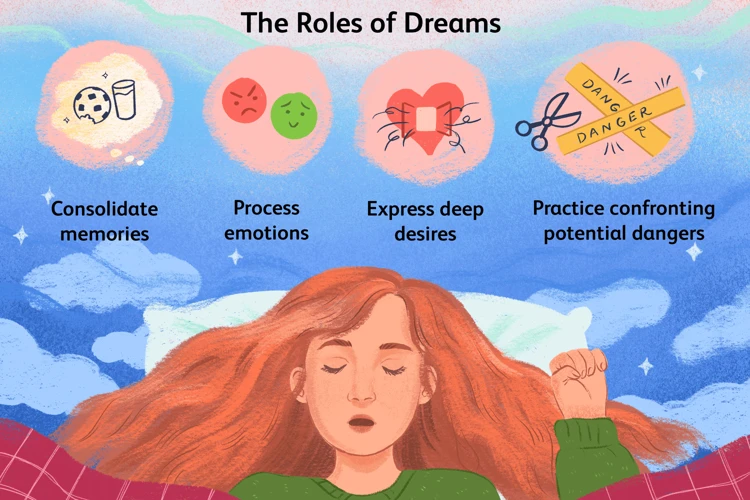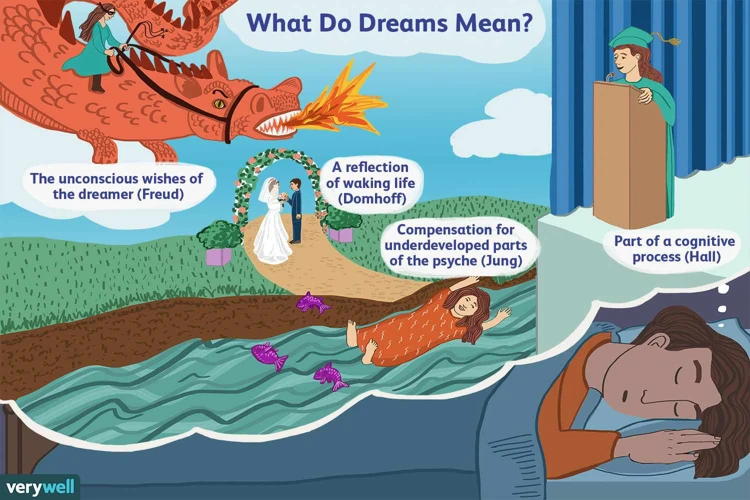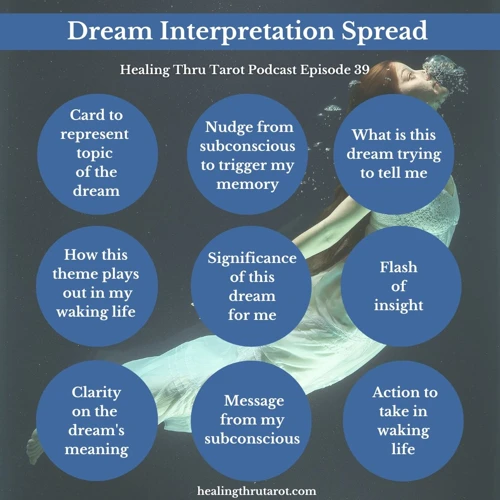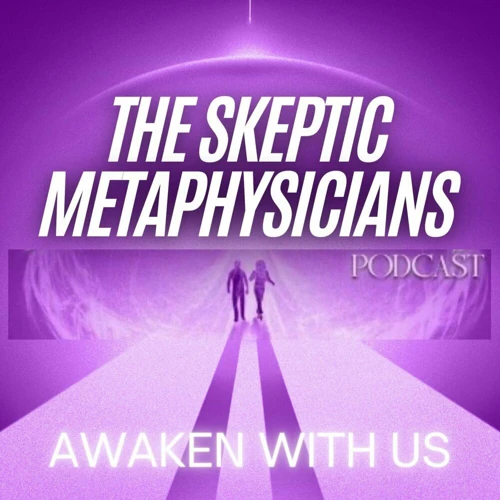Have you ever had a dream that felt so vivid and real, like you were reliving a different life altogether? If so, you may be intrigued by the concept of exploring past life regression through dream analysis. This fascinating practice delves into the notion that our dreams can offer insights into our past lives and help us gain a deeper understanding of ourselves. By examining the connection between past life regression and dream analysis, we can uncover the benefits, methods, and interpretations associated with this mystical journey. So, prepare to embark on a mysterious exploration of the subconscious mind and uncover the hidden treasures of your past lives.
The Connection Between Past Life Regression and Dream Analysis

Many spiritual practitioners believe that there is a deep connection between past life regression and dream analysis. Both practices involve accessing the subconscious mind to uncover hidden memories, experiences, and emotions. Dreams are often seen as a window into the subconscious, a realm where past life memories may be stored. By analyzing dreams, individuals can gain valuable insights into their previous incarnations and explore the events, relationships, and emotions that may have shaped their current life circumstances.
Dream analysis can serve as a powerful tool for exploring past lives. Dream symbolism and imagery can provide clues and hints about the past. For example, recurring dreams or specific symbols that appear in dreams might point to unresolved issues from past lives. By dissecting and interpreting these symbols, individuals can unravel the mysteries of their previous incarnations and gain a deeper understanding of themselves. Some dreams may feature unfamiliar people, locations, or time periods, which might indicate encounters with souls from past lives. These encounters can offer valuable lessons, unresolved emotions, or even the opportunity for growth and healing.
Dream analysis can complement traditional methods of past life regression. Individuals who have undergone past life regression sessions may find that their dreams align with the memories and experiences uncovered during regression. Dreams can serve as a confirmatory or supplementary tool to validate and support the insights gained through regression sessions.
The connection between past life regression and dream analysis is a profound one. Dreams provide a gateway to the subconscious, allowing individuals to explore their past lives and gain a deeper understanding of their current existence. By analyzing dream symbols, themes, and encounters, individuals can unlock the secrets of their past incarnations and embark on a transformative journey of self-discovery. So, let us delve into the world of dreams and uncover the hidden treasures of our previous lives.
Benefits of Exploring Past Lives through Dream Analysis

Exploring past lives through dream analysis can provide a myriad of benefits for individuals seeking personal growth and self-discovery. Here are some of the key advantages associated with this practice:
1. Self-Awareness and Understanding: By analyzing dreams and uncovering past life experiences, individuals can gain a deeper understanding of their core beliefs, patterns, and behaviors. This heightened self-awareness allows for personal growth and empowers individuals to make conscious choices aligned with their true selves.
2. Healing and Resolution: Dreams often serve as a manifestation of subconscious emotions and unresolved issues. Exploring past lives through dream analysis provides an opportunity to address and heal these unresolved traumas or emotions. This process allows for the release of emotional baggage, leading to personal healing, growth, and an improved overall well-being.
3. Insight into Relationships: Dreams about past life encounters with unfamiliar people or recurring relationship themes can offer valuable insights into current relationships. By understanding the dynamics and patterns from past lives, individuals can gain clarity about their current relationships and work towards creating healthier and more fulfilling connections.
4. Validation of Intuition and Inner Guidance: Dreams often serve as a gateway to tapping into one’s intuition and inner guidance. Exploring past lives through dream analysis helps individuals recognize and trust their intuition, leading to a greater sense of confidence and alignment with their authentic self.
5. Spiritual Awakening: Engaging in past life regression through dream analysis can deepen one’s spiritual journey. It expands one’s perspective beyond the boundaries of their current life, opening up a whole new realm of spiritual exploration and understanding. Through this process, individuals may experience a profound sense of connectedness and spiritual awakening.
It is important to note that the benefits of exploring past lives through dream analysis are highly individualized. Each person’s journey will be unique, and the insights gained from their dreams will be personal and subjective. However, the potential for self-discovery, healing, and personal growth make this practice a captivating and transformative endeavor.
So, if you’re intrigued by the idea of exploring past lives through dream analysis, let your dreams guide you on a profound journey of self-exploration and inner wisdom.
Methods of Past Life Regression through Dream Analysis

When it comes to exploring past life regression through dream analysis, there are several methods that can be employed to unlock the hidden memories of previous incarnations. One of the primary methods is keeping a dream journal. By recording dreams upon waking, individuals can capture the details, emotions, and symbols present in their dreams, allowing for later analysis and interpretation. Another method involves symbolic interpretation. By analyzing the symbols and imagery present in dreams, individuals can uncover connections to their past lives and gain insights into their experiences and lessons. Additionally, regression techniques such as guided meditation or hypnosis can be used to induce a state of relaxation and access the subconscious, allowing for the recall and exploration of past life memories that may manifest in dreams. These methods, when combined and practiced consistently, can serve as powerful tools for unraveling the mysteries of past lives through dream analysis.
1. Dream Journaling
Dream journaling is a powerful method for exploring past lives through dream analysis. It involves keeping a record of your dreams in a journal or a digital document. The process begins by placing a journal or a notebook beside your bed to capture your dreams as soon as you wake up. Upon waking, take a few moments to reflect on your dream and recall as many details as possible. Then, begin documenting your dream, writing down everything you remember. This includes the people, places, emotions, symbols, and any significant events that occurred during the dream.
Dream journaling helps to strengthen your dream recall abilities and allows you to identify recurring patterns or themes across different dreams. By regularly journaling your dreams over time, you may notice connections between certain symbols, people, or scenarios that could be linked to past life experiences.
To enhance the effectiveness of dream journaling, consider incorporating additional details such as the date of the dream, the time you went to bed, any relevant emotions you felt upon waking, and any waking life events that may have influenced the dream. This additional information can provide a broader context for analyzing your dreams and identifying any potential links to past lives.
When analyzing your dream journal, pay attention to common symbols or themes that frequently appear. Revisit earlier entries and look for recurring patterns or connections between dreams. Consider the emotions you felt during the dream and how they may relate to your current life circumstances or potentially unresolved issues from past lives.
Dream journaling can be a transformative practice, allowing you to explore the depths of your subconscious mind and unravel the mysteries of your past lives. By committing to the habit of writing down and reflecting on your dreams, you open yourself up to a wealth of insights and revelations that can guide you on your journey of self-discovery. So, start your dream journal today and embark on the fascinating exploration of your previous incarnations.
2. Symbolic Interpretation
Symbolic interpretation is a key method in exploring past life regression through dream analysis. This approach involves deciphering the hidden meanings and messages behind the symbols that appear in dreams. Dreams often speak to us in metaphorical language, using symbols to convey deeper truths and insights. By understanding and interpreting these symbols, individuals can uncover connections to their past lives and gain a better understanding of their current experiences.
When engaging in symbolic interpretation, it is important to pay attention to recurring symbols or themes that appear in dreams. These symbols may carry personal significance or represent archetypal images that hold universal meanings. For example, encountering water in a dream might symbolize emotions, while flying can represent freedom or spiritual liberation. By analyzing the symbolism within dreams, individuals can identify patterns and themes that may be connected to their past life experiences.
To interpret dream symbols, it can be helpful to keep a dream journal. Recording dreams upon waking allows individuals to capture the details and emotions associated with each dream. By reviewing the journal over time, patterns and recurring symbols can emerge, providing valuable clues to past life memories. Additionally, seeking guidance from professionals who specialize in dream analysis and past life regression can further enhance the interpretative process.
In the context of past life regression, dream symbols can serve as gateways to exploring previous incarnations. By recognizing and understanding the significance of certain symbols, individuals can unlock memories and gain insights into past life experiences. For example, encountering unfamiliar people in dreams may indicate connections to past life encounters. These encounters can offer opportunities for growth and healing, as individuals explore and resolve unfinished business from previous lifetimes.
Symbolic interpretation is a rich and intricate process that requires patience, intuition, and an open mind. By delving into the world of symbols and their meanings, individuals can uncover the hidden wisdom within their dreams and embark on a profound journey of self-discovery and exploration of past lives. So, embrace the symbols that appear in your dreams, for they hold the key to unlocking the mysteries of your previous incarnations.
3. Regression Techniques
Regression techniques are an essential component of exploring past lives through dream analysis. These techniques are designed to guide individuals into a deep state of relaxation and tap into their subconscious mind to access past life memories. There are several effective regression techniques that can be used to facilitate this process.
One commonly used technique is known as hypnotic regression. In this method, a trained hypnotherapist or regression specialist guides the individual into a relaxed state and then directs their focus to explore specific past life memories. Through deep relaxation and visualization, the individual may begin to recall details, emotions, and experiences from their past lives. The hypnotherapist acts as a facilitator, helping the individual navigate through the memories and providing support throughout the process. This technique can be highly effective in uncovering past life insights within the context of dream analysis.
Another regression technique that can be utilized is self-hypnosis. Self-hypnosis allows individuals to guide themselves into a relaxed and receptive state, making it a convenient option for those who prefer to explore past lives on their own. Using recorded guided meditations or scripts specifically tailored for past life regression, individuals can access their subconscious mind and delve into past life memories related to their dreams. Self-hypnosis can be a powerful tool for self-exploration and gaining personal insights into one’s past incarnations.
Visualization exercises are also effective regression techniques used in dream analysis. By creating a mental image of a past life scenario, individuals can tap into the emotions, sensations, and memories associated with that particular incarnation. Visualization exercises often involve consciously recreating dream scenes or engaging in guided visualizations focused on specific time periods or experiences. These exercises can help individuals connect with their dreams on a deeper level and unveil the messages and insights embedded within the dream imagery.
When utilizing regression techniques to explore past lives through dreams, it is essential to approach the process with an open mind and a willingness to explore the unknown. By combining regression techniques with dream analysis, individuals can uncover a wealth of information about their past incarnations and gain a greater understanding of the connections between their current life circumstances and their previous experiences. So, whether through hypnotic regression, self-hypnosis, or visualization exercises, these techniques offer powerful gateways to unlocking the mysteries of past lives and unraveling the significance of dream symbolism. Let us now proceed to the next section and explore the interpretation of past life insights within dreams.
Interpreting Past Life Insights in Dreams

Interpreting past life insights in dreams requires a careful analysis of dream symbols, themes, and experiences. Here are some key steps to consider when deciphering the messages from your dreams:
1. Keep a dream journal: Start by maintaining a dream journal where you document your dreams as soon as you wake up. This practice helps build a database of dream memories, allowing you to look for patterns, recurring symbols, or themes that may point towards past life experiences. Dream journaling enables you to track your dreams over time and identify connections between your current life and past lives.
2. Analyze dream symbols: Pay attention to the symbols that appear in your dreams. Symbols can hold deeper meanings and serve as gateways to uncovering past life memories. For example, encountering unfamiliar people, places, or time periods in your dreams might signal connections to previous incarnations. Consider the emotions and sensations associated with these symbols, as they can offer valuable insights into past life experiences. Cross-reference your dreams with known historical periods or cultures to gain a better understanding of the potential timeframes involved.
3. Look for recurring patterns: Notice if you have recurring dreams or recurring symbols in different dreams. These repetitions can indicate unresolved issues or lessons from past lives that are trying to get your attention. By identifying and analyzing these patterns, you can explore the deeper meanings behind them and determine how they relate to your current life circumstances.
4. Seek the assistance of a professional: If you feel overwhelmed or unable to interpret your dreams on your own, consider consulting with a professional past life regression therapist or dream analyst. They can provide guidance and support in unraveling the past life insights hidden within your dreams. Their expertise can offer valuable perspectives and enhance your understanding of the messages your dreams are trying to convey.
Remember, dream interpretation is a deeply personal and subjective process. Trust your intuition and inner guidance as you explore the past life insights within your dreams. Each dream holds a unique story and potential for self-discovery. By honing your interpretation skills and remaining open to the messages your dreams convey, you can embark on a transformative journey of understanding and healing through the exploration of dream symbols in past life experiences.
The Role of Dreams in Healing and Transformation

Dreams play a significant role in healing and transformation, offering a unique avenue for self-discovery and personal growth. During sleep, our minds enter a state where the subconscious takes over, allowing for the processing of emotions, memories, and unresolved experiences. Dreams can serve as a powerful tool for healing as they provide a safe space to explore and release emotions that may be hindering our progress. Through dreams, we can tap into deep-seated wounds, traumas, or unresolved issues from our past lives and current existence.
One way dreams contribute to healing is by bringing unresolved emotions to the surface. As we sleep, our subconscious mind may replay past life experiences or present-day situations, allowing us to confront and process unexpressed emotions. It is not uncommon to wake up from a dream feeling a sense of relief or catharsis. By allowing ourselves to feel and release these emotions, we can experience emotional healing and transformation.
Dreams also offer a channel for subconscious communication and guidance. Sometimes, dreams act as messengers, presenting us with symbols, archetypes, or messages that hold deep meaning. These messages can serve as guidance for our current life situations, offering insights, solutions, or new perspectives. Exploring and analyzing dream symbols can lead to profound revelations and facilitate personal growth.
Dreams can provide a platform for meeting unfamiliar people, whether they are strangers or individuals from past lives. These encounters can hold deep significance and contribute to our healing and transformation journey. Interacting with unfamiliar people in dreams can represent opportunities for growth, lessons to be learned, or unresolved connections from previous incarnations. By paying attention to these encounters and exploring their meaning, we can gain valuable insights into our own selves and our relationships with others.
Dreams play a pivotal role in our healing and transformation. They allow us to access our subconscious, release emotions, receive guidance, and connect with unfamiliar individuals from past lives or symbolic representations. By embracing the messages and symbols in our dreams, we can embark on a transformative journey of self-discovery, emotional healing, and personal growth. So, let us dive deep into the realm of dreams and unlock the profound potential they hold for our well-being and transformation.
Common Themes and Archetypes in Past Life Regression Dreams

Common themes and archetypes often emerge in past life regression dreams, providing valuable insights into previous incarnations. These recurring patterns and symbols can hold significant meaning and shed light on the experiences and lessons from past lives. One common theme is meeting unfamiliar people in dreams. These encounters may represent encounters with souls from past lives, offering opportunities for healing, growth, and resolution. These individuals might appear as guides, mentors, or even adversaries, reflecting the unfinished business or unresolved emotions from previous incarnations. Exploring the significance of meeting unfamiliar people in dreams can help individuals uncover the connections to their past lives and understand the impact these encounters have on their present reality.
Beyond meeting unfamiliar people, other archetypal themes frequently appear in past life regression dreams. Some individuals may have dreams of living in a different time period or culture. These dreams can provide a glimpse into a past life, allowing individuals to explore historical events, societal roles, and personal connections from a different era. Dreams of specific locations, such as ancient cities or rural landscapes, may also indicate strong associations with past lives.
Symbolic representations of work, relationships, and emotions can also offer important insights. For example, dreams of professions or activities that resonate deeply may be connected to talents or interests from previous incarnations. Dreams of significant relationships or intense emotions can reflect unresolved issues or karmic ties from past lives.
By analyzing these common themes and archetypes within past life regression dreams, individuals can gain a deeper understanding of their previous incarnations and the impact they have on their current life. Recognizing and interpreting these patterns can help to unravel the mysteries of the past and facilitate personal growth, healing, and transformation in the present. So, pay attention to the symbols and recurring themes in your dreams – they may hold the key to unlocking the secrets of your past lives.
Debunking Skepticism: Scientific Perspectives on Past Life Regression Dreams

When it comes to past life regression dreams, skepticism from a scientific standpoint is not uncommon. Scientific perspectives often seek tangible evidence and verifiable data to support claims. However, it is essential to acknowledge that the exploration of past life regression through dream analysis is based on personal experiences and subjective interpretations. While scientific research is limited in this area, there are some arguments and perspectives worth considering.
1. Lack of Empirical Evidence: Skeptics argue that there is a lack of empirical evidence to support the validity of past life regression dreams. They emphasize the importance of controlled experiments and objective measurements that can be replicated by researchers.
2. Role of the Subconscious Mind: Scientific perspectives suggest that past life regression dreams may be a product of the subconscious mind rather than actual glimpses into past lives. Dreams are influenced by a variety of factors, including personal beliefs, experiences, and cultural conditioning.
3. Psychological Explanation: Skeptics propose that the experiences of past life regression dreams can be attributed to psychological phenomena such as cryptomnesia (unconscious plagiarism) or confabulation (fabricated memories).
4. Placebo Effect: Some argue that the perceived insights and healing effects associated with past life regression dreams may be a result of the placebo effect. The power of suggestion and belief can play a significant role in shaping individuals’ experiences and interpretations.
5. Cultural and Historical Influences: Skeptics highlight the cultural and historical context in which past life regression dreams have gained popularity. They argue that beliefs in reincarnation and past lives vary across cultures and may be influenced by social conditioning rather than objective truth.
It is important to note that while scientific perspectives may debunk the claims of past life regression dreams, they do not invalidate personal experiences or the transformative effects that individuals may attribute to these dreams. Spiritual and metaphysical practices often operate outside the scope of traditional scientific methods, and personal beliefs can play a significant role in shaping individual experiences. Ultimately, the interpretation of past life regression dreams remains a subjective and personal journey, guided by individual beliefs and experiences.
Ancient Wisdom and Cultural Beliefs about Past Life Dreaming

Ancient wisdom and cultural beliefs provide us with fascinating insights into the concept of past life dreaming. Throughout history, many civilizations and cultures have embraced the idea that dreams hold significance beyond the realm of the conscious mind. From ancient Eastern philosophies to indigenous traditions across the globe, there is a rich tapestry of beliefs surrounding past life dreaming.
In various Eastern spiritual traditions, such as Hinduism and Buddhism, the concept of reincarnation is deeply ingrained. These belief systems propose that the soul goes through a cycle of birth, death, and rebirth, carrying the residue of past lives into the present one. Dreams are seen as a means of accessing this reservoir of past life experiences and memories. Followers of these traditions often engage in practices such as meditation and contemplation to help recall and interpret their dreams, seeking wisdom and guidance from their past selves.
In Native American cultures, dreams are considered a sacred space for connecting with ancestors and receiving messages from the spirit realm. Native American tribes believe that dreams serve as a bridge between the physical world and the spiritual realm. Dreams are seen as a means of communication and guidance, not only from the present but also from the past. Individuals who possess dreams that depict past life encounters or experiences are regarded with reverence and are often seen as conduits of ancestral wisdom.
In Egyptian mythology, dreams were believed to be portals to the afterlife. The ancient Egyptians saw dreams as a way for the soul to communicate with the gods and navigate the realms beyond earthly existence. Dreams were treated with great importance and were often interpreted by priests who believed they held insights into past lives, divine messages, and future events.
Similar beliefs can be found in other cultures, such as the Celtic traditions of Ireland and Scotland, where dreams were seen as a channel for connecting with ancestral spirits and gaining knowledge from past incarnations. Even in modern-day cultures, there is a continued fascination with past life dreaming, with many individuals exploring this realm through various spiritual practices and therapies.
The ancient wisdom and cultural beliefs surrounding past life dreaming shed light on the enduring fascination and importance of these experiences. Across different civilizations, dreams have been regarded as a doorway to the past, a means of connecting with our ancestral lineage, and a source of profound wisdom and guidance. As we explore past life regression through dream analysis, we tap into this collective heritage of beliefs and embrace the transformative power of our dreams.
Personal Stories: Exploring Past Lives through Dreams

Personal Stories: Exploring Past Lives through Dreams
The exploration of past lives through dreams is a deeply personal and subjective experience. Countless individuals have shared their own intriguing stories and experiences of uncovering past lives through their dreams. These personal accounts serve as captivating examples of the power and significance of dream analysis in the journey of self-discovery.
1. Sarah’s Reoccurring Dream: Sarah, a middle-aged woman, experienced a reoccurring dream for years where she found herself in a medieval village. In the dream, she was a young woman named Isabella, desperately in love with a man named Thomas. Through consistent dream journaling and symbolic interpretation, Sarah concluded that the dream represented her past life as Isabella. As she continued to explore this past life connection, Sarah discovered striking similarities between her present-day relationships and the dynamics of Isabella’s relationship with Thomas. This realization helped her gain clarity and heal past wounds in her current relationships.
2. Michael’s Vivid Memories: Michael, a young man with no prior knowledge of past life regression, began to experience vivid dreams of being a World War II pilot. In these dreams, he could recall specific details of the aircraft, the battles he fought in, and the strong camaraderie with his fellow soldiers. Intrigued by these dreams, Michael sought regression therapy to further explore his past life connections. During the regression session, he vividly remembered his time as a pilot named James, which aligned perfectly with the details from his dreams. This experience not only fascinated Michael but also provided him with a deeper understanding of his strong interest in history and aviation.
3. Emma’s Healing Journey: Emma, a woman in her late thirties, struggled with unexplained fears and phobias that had no apparent cause in her present life. Through dream analysis, Emma discovered recurring dreams of being trapped and suffocated in a confined space. These dreams led her to believe that they were connected to a past life experience. With the help of a regression therapist, Emma successfully accessed the memories of her past life as Katherine, a young girl who tragically died in a fire. This revelation allowed Emma to confront her fears and understand the origins of her phobias. Through further healing work, Emma was able to release the emotional baggage associated with her past life trauma, leading to a significant transformation in her current life.
These personal stories highlight the profound impact of exploring past lives through dreams. They showcase how dream analysis can provide profound insights, healing opportunities, and a sense of connection to our previous incarnations. While these stories may be anecdotal, they offer valuable glimpses into the possibilities and potentials that lie within the realm of past life exploration through dreams.
Preparing for Past Life Regression through Dream Analysis

Preparing for past life regression through dream analysis involves creating a conducive environment and mindset to delve into the depths of the subconscious. Here are some essential steps to consider:
1. Establish a Dream Journal: Begin by keeping a dedicated dream journal next to your bed. As soon as you wake up, jot down any dreams you recall, no matter how fragmented or fuzzy they may seem. Recording dreams regularly helps to develop a strong dream recall ability and builds a foundation for analyzing and interpreting past life symbols.
2. Cultivate Mindfulness: Practicing mindfulness throughout the day can enhance your dream experiences. Stay present and aware of your surroundings, emotions, and thoughts. This mindfulness will naturally extend into your dream state, making it easier to remember your dreams and analyze them accurately.
3. Set Intentions: Before going to sleep, set a clear intention to remember your dreams and gain insights into your past lives. Repeat affirmations like “I will dream vividly and recall my past life experiences” to prime your subconscious mind for exploration during sleep.
4. Create a Relaxing Bedtime Routine: Establish a soothing routine before bed to promote relaxation and deep sleep. Avoid stimulating activities or electronics close to bedtime. Engage in activities like reading calming books, taking a warm bath, or practicing gentle stretches to unwind and prepare your mind for dream exploration.
5. Use Visualization Techniques: Visualize yourself exploring past lives, connecting with your higher self, and uncovering meaningful insights during your dream state. This visualization practice can help program your subconscious mind and enhance the potential for past life regression through dreams.
6. Seek Professional Guidance: If you feel called to delve deeper into past life regression through dream analysis, consider working with a qualified professional. A trained hypnotherapist or regression therapist can provide guidance, support, and techniques to facilitate profound and transformative experiences.
Remember, each individual’s experience with past life regression through dream analysis will be unique. Stay patient, open-minded, and receptive to the messages and symbols that arise during dream exploration. By preparing yourself mentally, emotionally, and spiritually, you increase the likelihood of accessing deep insights and healing opportunities through your dreams.
Understanding the Limitations of Past Life Regression through Dream Analysis

When exploring past life regression through dream analysis, it’s important to acknowledge and understand the limitations of this practice. While dreams can provide valuable insights into past lives, it’s crucial to approach them with a balanced and discerning mindset. Here are some key limitations to keep in mind:
1. Subjectivity: Dreams are highly subjective experiences, influenced by a variety of factors such as personal beliefs, emotions, and current life experiences. It’s essential to recognize that dream interpretations for past life regression are open to individual interpretation and may differ from person to person.
2. Symbolic Interpretation: Dream symbolism is complex and can have different meanings for different individuals. The interpretation of symbols related to past life experiences can vary and might not always provide concrete evidence or details about specific past lives. It’s necessary to exercise caution in interpreting symbols and seek multiple perspectives for a more comprehensive understanding.
3. Memory Fragmentation: Memories of past lives accessed through dreams may be fragmented, incomplete, or distorted. Dreams often present information in symbolic or metaphorical form, making it challenging to extract precise historical details. While past life regression through dream analysis can offer glimpses into past experiences, it’s important to approach these memories with a degree of skepticism.
4. Psychological Factors: Dreams can also be influenced by psychological factors such as desires, fears, and unresolved emotions. It’s essential to consider the possibility that some dream content may stem from the unconscious mind rather than direct past life experiences. Separating personal psychology from past life memories can be a complex task.
5. Lack of Verifiability: Unlike other forms of past life regression, such as hypnosis or meditation, dreams lack external validation. The information obtained through dream analysis cannot be easily verified or corroborated with historical records or the experiences of others. It’s crucial to approach dream-based past life regression with a healthy dose of skepticism and maintain a critical mindset.
By understanding the limitations of past life regression through dream analysis, individuals can engage in this practice with a balanced perspective. While dreams can provide valuable insights and glimpses into past lives, it’s important to view them as a part of a broader exploration of the self and exercise caution in interpreting their meaning.
Ethical Considerations and Responsible Practice
Ethical considerations and responsible practice play a crucial role in exploring past life regression through dream analysis. It is essential for practitioners and individuals engaging in this practice to approach it with sensitivity, respect, and mindfulness. Respecting the boundaries and beliefs of individuals is paramount, as not everyone may believe in past lives or find value in exploring them through dream analysis.
First and foremost, consent is a fundamental ethical consideration. Practitioners should always obtain informed consent from individuals before conducting past life regression sessions or analyzing their dreams. This ensures that individuals are fully aware of the process, potential outcomes, and any associated risks.
Confidentiality is another vital aspect of responsible practice. Practitioners must maintain strict confidentiality regarding any personal information or experiences shared during past life regression or dream analysis sessions. This builds trust between the practitioner and the individual, creating a safe space for exploration.
It is crucial to approach past life regression and dream analysis with an open and non-judgmental mindset. Practitioners should refrain from imposing their beliefs or interpretations onto the experiences of individuals. Each person’s journey is unique, and their interpretations of dreams or regression experiences may differ from the practitioner’s perspective. Emphasizing personal empowerment and self-discovery is essential in responsible practice.
Practitioners should also be aware of the limitations of this practice and not make any claims of absolute certainty or universal truth regarding past lives or the interpretations of dreams. It is important to remember that past life regression and dream analysis are subjective experiences and should be treated as such. Practitioners should encourage individuals to exercise critical thinking and personal discernment when exploring their past lives through dream analysis.
Lastly, it is crucial to provide ongoing support and aftercare for individuals who engage in past life regression and dream analysis. This may include providing resources for self-reflection, guidance for processing the gained insights, or referrals to mental health professionals if needed. Practitioners should prioritize the well-being and emotional integration of individuals throughout their exploration of past lives.
By adhering to ethical considerations and responsible practice, individuals and practitioners can engage in an ethical and respectful exploration of past life regression through dream analysis. This ensures that the practice is conducted in a safe, supportive, and empowering manner, allowing individuals to derive the maximum benefit from their experiences.
Conclusion
In conclusion, exploring past life regression through dream analysis offers a fascinating and enlightening journey into the depths of our subconscious minds. By examining the connection between past life regression and dream analysis, we have discovered the profound ways in which dreams can provide insights into our previous incarnations. Dream symbolism, recurring themes, and encounters with unfamiliar people or places can all serve as valuable indicators of past life experiences.
Through methods such as dream journaling, symbolic interpretation, and regression techniques, individuals can begin to unravel the mysteries of their past lives and gain a deeper understanding of themselves. Dreams can validate and complement the insights gained through past life regression sessions, offering a unique perspective that supports the journey of self-discovery.
While exploring the realms of past life regression through dream analysis, it is important to approach the process with an open mind, respect, and ethical considerations. The knowledge gained from these experiences should be used for personal growth, healing, and transformation.
So, embrace the power of dreams, embark on the journey of past life regression, and unlock the hidden wisdom of your previous incarnations. The connection between the dream world and the realm of past lives awaits, ready to reveal the intricate tapestry of your soul’s journey throughout time.
Frequently Asked Questions
1. Can dream analysis really help uncover past life memories?
Dream analysis is considered by many as a valuable tool for exploring past life memories. While it may not provide definitive proof of past lives, it can offer insights, symbols, and themes that align with past life experiences, helping individuals gain a deeper understanding of their past incarnations.
2. How can I start analyzing my dreams for past life connections?
You can start analyzing your dreams for past life connections by keeping a dream journal and recording your dreams in detail. Look for recurring symbols, themes, or unfamiliar people or places in your dreams. Then, research and interpret these symbols to uncover potential connections to past lives.
3. What is the significance of meeting unfamiliar people in dreams?
Meeting unfamiliar people in dreams could signify encounters with souls from past lives. These individuals may hold important messages, lessons, or unresolved emotions that need to be acknowledged and addressed in your current life.
4. Can dream symbolism provide clues about unresolved issues from past lives?
Absolutely. Dream symbolism can often provide valuable clues about unresolved issues from past lives. Pay attention to recurring symbols or themes in your dreams and explore their possible meanings in the context of your past life experiences.
5. How can dream analysis complement traditional past life regression?
Dream analysis can complement traditional past life regression by offering additional insights and validation. Dreams may align with memories and experiences uncovered during regression, providing further confirmation of the past life connections and offering a holistic understanding of one’s journey through different incarnations.
6. Is it possible to dream about future lives instead of past lives?
While dreams primarily offer insights into past lives, some individuals claim to have dreams that provide glimpses of their future lives. However, it’s important to approach such experiences with an open mind and discernment, as dreams can be influenced by various factors and interpretations can vary.
7. Can dream analysis help with healing and transformation?
Yes, dream analysis can be a catalyst for healing and transformation. By exploring the symbols, themes, and encounters in dreams, individuals can gain deeper insights into unresolved emotions, past life traumas, and patterns that may be impacting their current life. This self-awareness can pave the way for healing and personal growth.
8. Are there any scientific perspectives on past life regression dreams?
While scientific perspectives on past life regression dreams vary, some researchers believe that past life experiences accessed through dreams could be a reflection of the mind’s symbolic processing or the result of memory associations. However, it’s important to approach these perspectives with an open mind and consider the limitations of scientific understanding in exploring metaphysical phenomena.
9. Are there any ancient wisdom or cultural beliefs about past life dreaming?
Yes, various ancient wisdom traditions and cultural beliefs acknowledge the existence of past lives and the ability to access past life memories through dreams. For example, in Hinduism and Buddhism, the concept of reincarnation is deeply ingrained, and dreams are seen as glimpses into previous and future lives.
10. Can dream analysis help prepare for future past life regression sessions?
Dream analysis can indeed help prepare for future past life regression sessions. By examining the symbols, themes, and encounters in your dreams, you may gain insights that can guide your intention and focus during regression, allowing for a more targeted exploration of your past lives.








